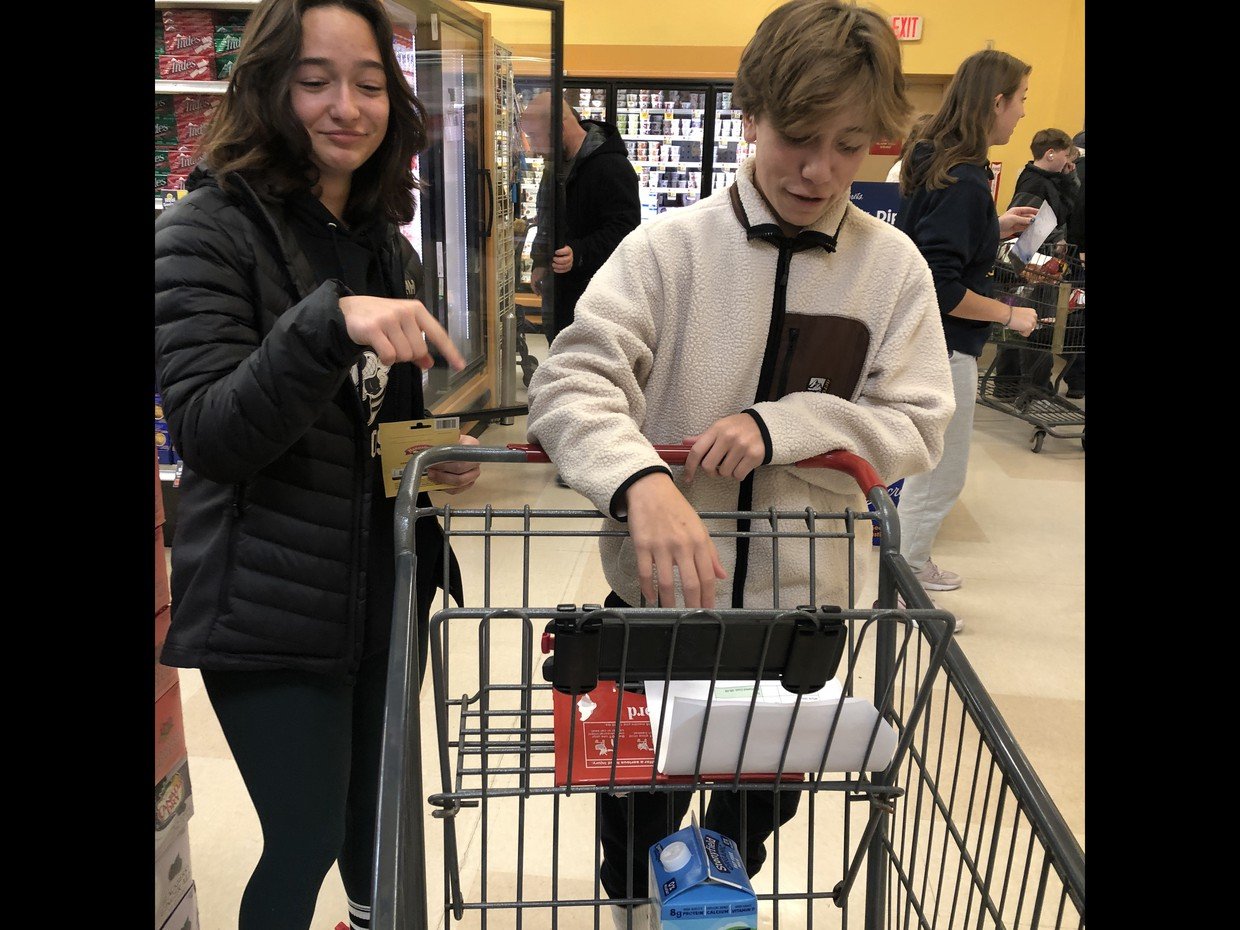9th graders study connection between carbon cycle and food insecurity
How are the carbon cycle and the issue of food security related? Ask a 9th grader. They’ve been working on an interdisciplinary project this semester that culminated in several days of field work in our community. In Wellness and Modern World, students took the 3SquaresVT challenge where they worked in groups to create a menu within the budgetary constraints of this food assistance program and then analyzed it for nutritional value. This week they shopped at Hannaford’s for these food items and then delivered them to the Upper Valley Haven. Budgeting, learning food prices, menu planning, food access, and community service are all real-world skills students learned through this project.
Additionally, in their Integrated Environmental Science class, students are following their investigation of the nitrogen cycle with a deep dive into the carbon cycle. To see an example of a closed loop carbon cycle, students visited Sunrise Farm to explore nutrient cycling between vegetables and livestock and a community-scale composting system, all situated under solar panels. Farm staff discussed the pros and cons of a CSA system in the context of food access and students dug their hands into a 170 degree compost pile that instantly provided warmth on a windy 25 degree day. Bacteria is kind of amazing.
“I learned that farms and agriculture can be an important part of the solution to addressing food insecurity and supporting the carbon cycle. Farming practices that promote sustainable and efficient use of resources, such as composting and cover cropping, can help to increase the productivity of the land and reduce negative impacts on the environment.”


